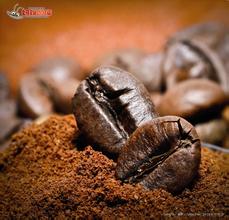Flavor description of Nicaraguan Coffee Grinding Calibration method introduction to manors in producing areas
Flavor description of Nicaraguan Coffee Grinding Calibration method introduction to manors in producing areas
Nicaragua is an economically backward agricultural country, is one of the poorest countries in Central America, the unemployment rate is very high, people live in poverty, and coffee is Nicaragua's pillar industry, producing nearly 100,000 tons of coffee beans every year. Due to the poor economic foundation, the coffee industry is still relatively backward, and coffee farmers are also in a relatively poor state.
In the medium and deep baking degree, with a certain sweet, sour taste is not obvious, with a little chocolate and dried fruit taste, as the temperature decreases, the fruit acid can be felt, but it is still very mild. The taste is clean, but the mellowness and persistence in the mouth are lacking. Suitable for people who don't like sour coffee, like balanced taste and sweet taste.
The ideal planting conditions for coffee trees are: the temperature is between 15 degrees and 25 degrees, and the annual rainfall must reach 1500 mm to 2000 mm. At the same time, the rainfall time should be in line with the flowering cycle of coffee trees. Of course, in addition to the seasonal rainfall, there should be fertile soil and good drainage.
Traditional Nicaraguan coffee farmers are used to using water washing method for subsequent processing of coffee fruits. Coffee farmers are more accustomed to using water washing to ensure that the flavor of raw coffee beans is more stable and clean. it was not until about 2009 that the traditional concept of coffee farmers changed and began to try processing methods such as full sun and honey in more areas.

Important Notice :
前街咖啡 FrontStreet Coffee has moved to new addredd:
FrontStreet Coffee Address: 315,Donghua East Road,GuangZhou
Tel:020 38364473
- Prev

Introduction to the varieties of Burundian Coffee produced by Grinding and Calibration treatment
The East African reported on the 8th that in order to help Burundi integrate into the world coffee market as soon as possible, Starbucks has funded officials of the Burundian Coffee Management Commission to study abroad, and Starbucks executives will also visit Burundi this month to discuss cooperation with relevant parties. Coffee is Burundi's main export.
- Next

Description of the characteristics and Flavor of Colombian Coffee beans introduction to the producing areas of varieties with taste grinding scale
Colombian coffee bean characteristics flavor description grinding scale variety production area Colombian coffee has a bitter experience, astringent as life, but bitterness is necessary in life, the last fragrance that stops at the root of the tongue is a thorough recollection of the past. Looking back on the bitterness of the past, you will feel more sweet and warm, and want to let the mood stop for a long time in the knowledge that begins to awaken.
Related
- Detailed explanation of Jadeite planting Land in Panamanian Jadeite Manor introduction to the grading system of Jadeite competitive bidding, Red bid, Green bid and Rose Summer
- Story of Coffee planting in Brenka region of Costa Rica Stonehenge Manor anaerobic heavy honey treatment of flavor mouth
- What's on the barrel of Blue Mountain Coffee beans?
- Can American coffee also pull flowers? How to use hot American style to pull out a good-looking pattern?
- Can you make a cold extract with coffee beans? What is the right proportion for cold-extracted coffee formula?
- Indonesian PWN Gold Mandrine Coffee Origin Features Flavor How to Chong? Mandolin coffee is American.
- A brief introduction to the flavor characteristics of Brazilian yellow bourbon coffee beans
- What is the effect of different water quality on the flavor of cold-extracted coffee? What kind of water is best for brewing coffee?
- Why do you think of Rose Summer whenever you mention Panamanian coffee?
- Introduction to the characteristics of authentic blue mountain coffee bean producing areas? What is the CIB Coffee Authority in Jamaica?

